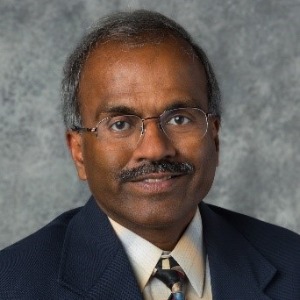Title : Predicting Salmonella inactivation in water from bubble sparkling cold plasma treatment
Abstract:
Microbial contamination in food and water poses significant health risks, and conventional treatments have limitations. Cold Plasma technology offers a non-thermal alternative, generating reactive oxygen and nitrogen species (RONS) like ozone, nitrate, nitrite, and hydrogen peroxide. However, predicting microbial inactivation from cold plasma treatment is challenging due to numerous influencing factors. This research attempts to correlate microbial inactivation in water with the generation of RONS from a BSD cold plasma reactor.
Cold plasma was generated in air bubbles using a BSD reactor operated at frequencies ranging from 500 Hz to 2500 Hz, and the plasma bubbles were instantly passed through 100 ml of deionized water at a flow rate of 2 L/min. The microbial inactivation study involved inoculating water samples with Salmonella cocktail culture (S. Enteritidis PT30 STCC BAA-1045, S. Mbandaka 69858, and S. Tennessee K4643) at inoculation level of 9.1 log CFU/g followed by plasma exposure at specified frequencies and durations (1--6 min, varying by frequency). Surviving populations were quantified via serial dilution, incubation, and plate counting. For the quantification of chemical species such as pH, ozone (O₃), nitrate (NO₃⁻), nitrite (NO₂⁻), and hydrogen peroxide (H₂O₂), water samples were treated under conditions microbial inactivation was evaluated and tested using standardized colorimetric test strips. Correlations between microbial inactivation and chemical concentrations were analysed, and mathematical models were developed to describe the relationship.
Higher frequencies accelerated the inactivation of Salmonella enteritidis, achieving a 4.0 log CFU/g reduction in 70 seconds at 2500 Hz, compared to 6 minutes at 500 Hz. Nitrite, nitrate, hydrogen peroxide, ozone, and pH concentrations varied with frequency and time combinations, with ranges of nitrite (0.5–10 ppm), nitrate (10–100 ppm), hydrogen peroxide (0.5–10 ppm), ozone (0.05–0.8 ppm), and pH (4.0–6.0). Peak concentrations were achieved more quickly at higher frequencies and gradually at lower frequencies. A predictive model revealed a strong correlation between microbial inactivation and ozone generation.
This research suggests that the accumulation of RONS in water from cold plasma treatment can be used as an indicator of microbial inactivation.



